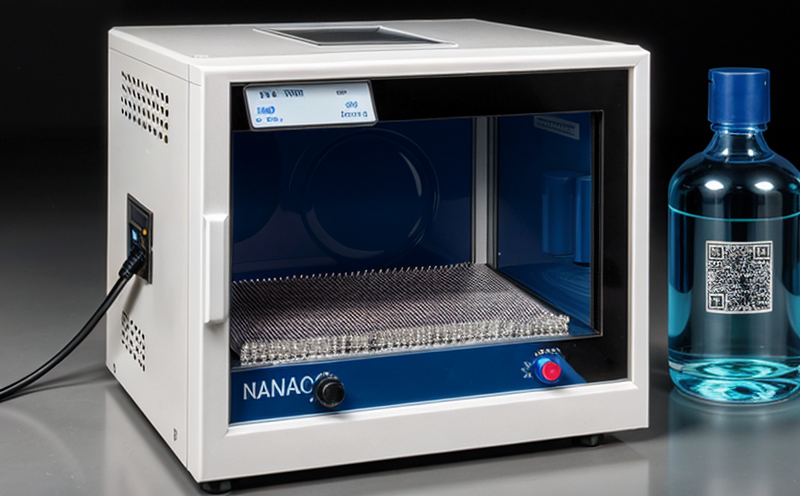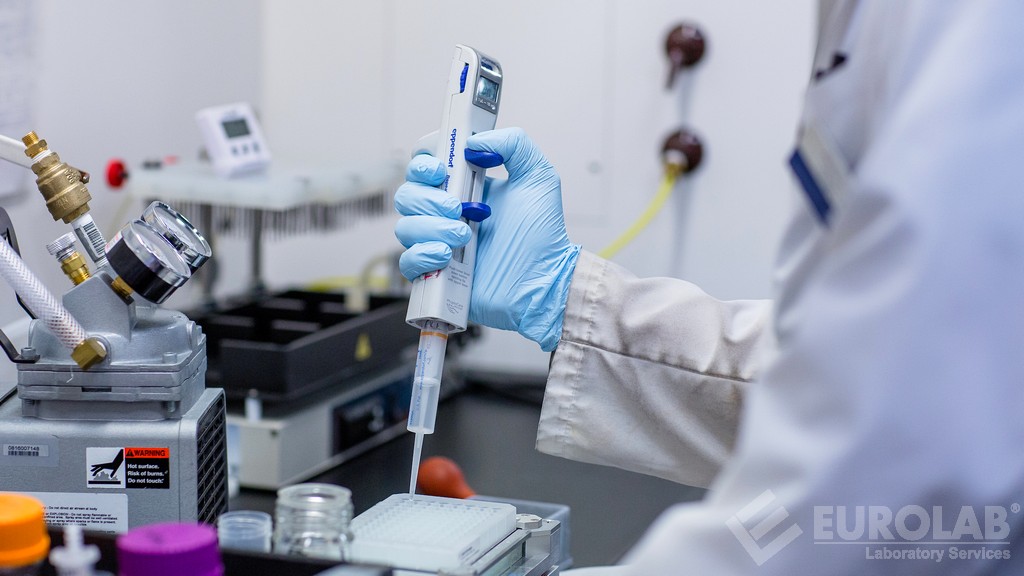ISO 19749 Nanoparticle Size Distribution Testing by DLS
The ISO 19749 standard provides a comprehensive framework for determining nanoparticle size distribution using Dynamic Light Scattering (DLS) techniques. This method is particularly useful in the chemical testing sector where precision and accuracy are paramount, especially when dealing with nanomaterials.
Nanoparticles, due to their small size, can exhibit unique physical and chemical properties that differ significantly from those of larger particles. Accurate characterization is crucial for ensuring product quality, safety, and regulatory compliance. DLS testing by ISO 19749 allows for the measurement of particle size distribution over a wide range, typically from sub-nanometer to micrometer sizes.
The process involves suspending nanoparticles in a liquid medium and exposing them to a laser beam. The scattered light is analyzed to determine the size distribution of particles present in the suspension. This technique provides detailed information about the polydispersity index, which indicates how uniform or broad the particle size distribution is within the sample.
Preparation of the sample for DLS testing requires careful consideration. Typically, samples are diluted appropriately and sonicated to ensure a stable dispersion before being analyzed. The choice of solvent can significantly impact the results, so it should be selected based on compatibility with the nanoparticles under test.
The ISO 19749 standard specifies detailed procedures for sample preparation, instrument calibration, and data analysis. Compliance with these standards ensures that the testing process is reproducible and meets international quality benchmarks.
Understanding the limitations of DLS is crucial when interpreting results. Factors such as particle shape, aggregation state, and concentration can influence the measured size distribution. Therefore, it's essential to consider these variables during sample preparation and analysis.
DLS testing by ISO 19749 finds applications in various sectors including pharmaceuticals, cosmetics, environmental science, and materials engineering. In the pharmaceutical industry, for instance, it helps ensure drug stability and efficacy by monitoring nanoparticle size changes during formulation development. In cosmetics, it aids in formulating products with desired particle sizes to achieve specific cosmetic effects.
For environmental scientists, DLS testing is essential for assessing the potential risks associated with nanoparticles released into the environment. Materials engineers use this technique to optimize product design and manufacturing processes by understanding how different nanoparticle characteristics affect performance.
In summary, ISO 19749 Nanoparticle Size Distribution Testing by DLS is a critical tool in the chemical testing sector for ensuring precision and accuracy in nanoparticle analysis. By adhering to international standards, laboratories can provide reliable data that meets regulatory requirements and supports informed decision-making across various industries.
Why It Matters
The accurate characterization of nanoparticle size distribution is crucial for several reasons:
Ensures product quality: Precise measurement helps maintain consistent performance and reliability across batches.
Achieves regulatory compliance: Meeting international standards ensures that products meet legal requirements and can be marketed globally.
Enhances safety: Understanding nanoparticle behavior is essential for assessing potential health risks associated with their use or release into the environment.
Promotes innovation: Detailed characterization aids in developing new materials and formulations that leverage unique nanoscale properties.
In conclusion, ISO 19749 Nanoparticle Size Distribution Testing by DLS is vital for maintaining high standards of quality and safety across various sectors.
Industry Applications
Pharmaceuticals: Monitoring drug stability and efficacy during formulation development.
Cosmetics: Formulating products with desired particle sizes to achieve specific cosmetic effects.
Environmental Science: Assessing the potential risks of nanoparticles released into the environment.
Mechanical Engineering: Optimizing product design and manufacturing processes by understanding how different nanoparticle characteristics affect performance.
The versatility of DLS testing makes it an indispensable tool across these diverse industries, ensuring that nanomaterials are used responsibly and effectively.
Quality and Reliability Assurance
Accurate nanoparticle size distribution testing is essential for quality assurance in chemical testing. By adhering to ISO 19749 standards, laboratories can ensure consistent and reliable results that meet international benchmarks.
The standard specifies detailed procedures for sample preparation, instrument calibration, and data analysis. Compliance with these protocols guarantees that the testing process is reproducible, yielding accurate measurements of nanoparticle size distribution.
Regular calibration of instruments ensures that the equipment remains in optimal working condition, further enhancing the reliability of test results. Proper training of personnel involved in the testing process also plays a key role in maintaining high-quality standards.
The use of advanced software for data analysis allows for more precise interpretation of results. This technology can help identify trends and anomalies that might otherwise go unnoticed, providing deeper insights into nanoparticle behavior.
In conclusion, quality and reliability assurance are paramount when conducting ISO 19749 Nanoparticle Size Distribution Testing by DLS. By following best practices outlined in the standard, laboratories can ensure that their results meet international standards and support informed decision-making across various industries.





